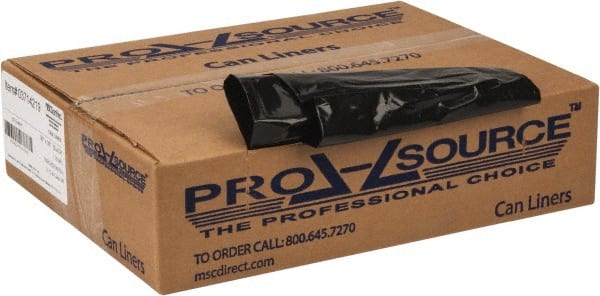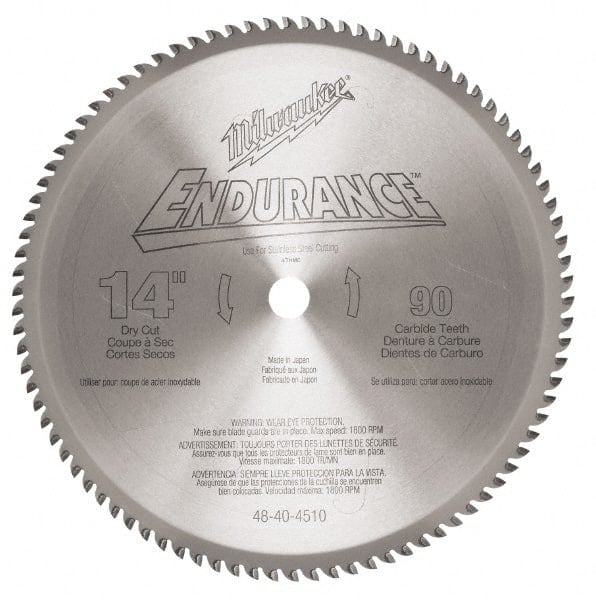Navigating NAICS Codes: A Comprehensive Guide for Businesses

Introduction
In the world of commerce and industry, effective categorization is a cornerstone for understanding, analyzing, and thriving within the market landscape. Enter NAICS codes, the North American Industry Classification System codes. These codes play a pivotal role in classifying businesses and industries, aiding in statistical analysis, resource allocation, and government contracting. In this guide, we'll delve into the importance of NAICS codes, their history, significance for businesses, potential risks of misclassification, and how they impact government contracts.
The Significance of NAICS Codes
Understanding NAICS Codes
NAICS codes are not just arbitrary numbers; they are a systematic classification framework used across the United States, Canada, and Mexico to categorize businesses and industries. This standardized system allows for consistent data collection, trend analysis, and resource allocation. From the expansive spectrum of offerings, ranging from office supplies to industrial tools, NAICS codes provide a structured way to organize and understand the economic landscape.
Their Importance for Businesses
Businesses of all sizes and sectors benefit from NAICS codes. These codes offer a clear, concise way to convey a company's main activities. Properly assigned codes ensure that businesses are accurately represented in industry data, market reports, and government procurement databases. By selecting the appropriate codes, businesses can effectively position themselves for growth and connect with opportunities that align with their expertise.
Exploring NAICS Codes: An In-Depth Look
The Top 25 Federal Agencies Utilizing NAICS Codes for Contracting
In the intricate realm of government procurement and business transactions, NAICS codes serve as a universal language that bridges the gap between suppliers and purchasers. These codes play a crucial role in ensuring that the right products and services reach the right hands. While the specific organizations utilizing NAICS codes can vary based on contracts and economic landscapes, here's a look at some prominent players that have consistently relied on NAICS codes to award contracts:
- Department of Defense (DoD): As the largest purchaser in the U.S. government, the DoD relies heavily on NAICS codes to identify businesses that can supply a vast array of goods and services, ranging from military equipment to technology solutions.
- General Services Administration (GSA): The GSA is responsible for managing government assets and offering procurement solutions to other federal agencies. NAICS codes enable the GSA to efficiently categorize products and services available on the GSA Schedule.
- National Aeronautics and Space Administration (NASA): From rocket components to cutting-edge research, NASA utilizes NAICS codes to connect with suppliers capable of contributing to the nation's space exploration endeavors.
- Department of Health and Human Services (HHS): The HHS relies on accurate NAICS codes to access a diverse range of medical supplies, research services, and healthcare solutions required for public health initiatives.
- Department of Energy (DOE): The DOE contracts with businesses using NAICS codes to fulfill the diverse energy-related needs of the nation, including research, development, and infrastructure.
- Department of Transportation (DOT): NAICS codes help the DOT efficiently source transportation services, infrastructure development, and related technologies.
- Environmental Protection Agency (EPA): The EPA utilizes NAICS codes to access a variety of environmental solutions, such as pollution control, waste management, and sustainability services.
- Department of Homeland Security (DHS): To enhance national security, the DHS relies on NAICS codes to acquire technologies, services, and resources that support its mission.
- Department of Veterans Affairs (VA): The VA uses NAICS codes to ensure that businesses providing healthcare services, medical equipment, and veterans' support align with its requirements.
- Federal Emergency Management Agency (FEMA): NAICS codes are essential for FEMA to source disaster response resources, emergency management services, and critical supplies.
- United States Postal Service (USPS): The USPS employs NAICS codes to secure supplies, technology, and services needed for efficient mail and package delivery.
- Department of Education: NAICS codes assist in contracting educational resources, research services, and technology solutions to enhance the nation's education system.
- Department of Agriculture (USDA): The USDA uses NAICS codes to access agricultural products, research, and services that contribute to food safety and sustainability.
- Department of Commerce: NAICS codes support the Department of Commerce in procuring trade-related services, economic research, and technological innovations.
- Department of Justice (DOJ): The DOJ relies on NAICS codes to acquire legal services, technological solutions, and resources necessary for upholding the law.
- Department of the Interior: NAICS codes are vital for sourcing natural resource management, conservation, and recreation services.
- Department of Labor (DOL): The DOL utilizes NAICS codes to secure workforce development services, research, and technological solutions.
- Department of Housing and Urban Development (HUD): NAICS codes enable HUD to contract construction, housing development, and urban planning services.
- Department of Commerce: The Department of Commerce relies on NAICS codes to access trade-related services, economic research, and technological innovations.
- Department of Transportation (DOT): The DOT uses NAICS codes to efficiently source transportation services, infrastructure development, and related technologies.
- Department of State: NAICS codes help the Department of State acquire diplomatic services, international affairs support, and global communication solutions.
- Small Business Administration (SBA): NAICS codes play a pivotal role in the SBA's efforts to promote small business growth and connect entrepreneurs with government contracts.
- National Institutes of Health (NIH): NAICS codes support the NIH in sourcing medical research, clinical trials, and healthcare solutions.
- Federal Aviation Administration (FAA): The FAA uses NAICS codes to acquire aviation-related services, safety solutions, and technological innovations.
- Department of Treasury: NAICS codes are crucial for the Department of Treasury to contract financial services, economic research, and technological solutions.
While this list provides insight into the diverse range of organizations that rely on NAICS codes, it's important to note that the landscape of government contracts is dynamic. Organizations may vary over time, and new players can emerge as industries evolve. Regardless of the specific entities, one thing remains constant: NAICS codes are the backbone of effective communication and collaboration between the government and businesses, ensuring that essential goods and services reach the hands of those who need them most.
NAICS Codes and State Agencies
The vast majority of U.S. state governments and agencies also rely on NAICS codes for various purposes, including procurement, economic analysis, and industry classification. Just as NAICS codes are essential at the federal level for government contracting and understanding industries, they hold similar importance at the state level.
Here's why NAICS codes are significant for state governments and agencies:
- Procurement and Contracting: State governments, like their federal counterparts, use NAICS codes to identify and categorize businesses when awarding contracts. NAICS codes help streamline the procurement process by ensuring that the right suppliers are connected with the right projects.
- Economic Analysis: NAICS codes are not only helpful for businesses but also for economic researchers and analysts. State governments utilize NAICS codes to gather data about industries operating within their jurisdiction. This information assists in economic planning, policy development, and understanding regional economic trends.
- Resource Allocation: When allocating resources for infrastructure projects, public services, and other initiatives, state agencies rely on NAICS codes to find businesses that can fulfill specific needs.
- Business Registration and Licensing: State agencies responsible for business registration and licensing often use NAICS codes to categorize and classify businesses accurately. This ensures that businesses are appropriately categorized for regulatory and administrative purposes.
- Labor Market Information: NAICS codes are valuable for analyzing labor market information, understanding workforce trends, and matching job seekers with suitable employment opportunities.
- Industry-Specific Regulations: State governments may have industry-specific regulations and incentives. NAICS codes play a role in defining the scope of these regulations and providing clarity on the types of businesses affected.
- Data Collection and Reporting: State agencies collect a wide range of data for reporting and analysis purposes. NAICS codes provide a standardized way to organize and report this data across different industries.
While NAICS codes are widely used by state governments and agencies, it's important to note that the specific processes and systems for implementing NAICS codes can vary from state to state. However, the fundamental purpose of using NAICS codes as a common language for categorizing and understanding industries remains consistent.
Accessing NAICS Codes
Obtaining a comprehensive list of NAICS codes is relatively straightforward. The NAICS Association website and the U.S. Census Bureau's portal both provide access to these codes. With a comprehensive list at hand, businesses can accurately select codes that best represent their products and services.
Assigning NAICS Codes
NAICS codes are assigned by the U.S. Census Bureau. The bureau regularly updates the codes to reflect changes in the economy and emerging industries. As businesses evolve, it's crucial to periodically review and update your assigned codes to ensure they accurately reflect your activities.
A Historical Perspective: Evolution of NAICS Codes
From SIC to NAICS
The evolution of NAICS codes traces its roots to the need for a classification system that accurately reflected the dynamic and evolving nature of industries in the modern economic landscape. The predecessor to NAICS, the Standard Industrial Classification (SIC) system, served as the classification standard for decades. However, as industries rapidly transformed and new sectors emerged, it became evident that the SIC system was no longer sufficient in capturing the intricate nuances of the evolving business world.
The limitations of the SIC system became increasingly apparent as it struggled to accommodate emerging industries and failed to provide the granularity necessary to accurately categorize businesses. This created a gap between the classification system and the actual economic activities taking place, leading to a growing need for a more comprehensive and flexible framework.
NAICS: A Collaborative Solution
The 1990s marked a pivotal era for industry classification. Recognizing the need for a modern and adaptable system, the United States, Canada, and Mexico joined forces to develop the North American Industry Classification System (NAICS). This collaborative effort aimed to create a classification system that could accommodate the changing business landscape, accurately represent emerging industries, and provide a more realistic reflection of economic activities.
NAICS was designed to go beyond the limitations of its predecessor. It introduced a more flexible structure that allowed for easier adaptation to technological advancements and shifting market trends. By incorporating new industries and sectors that had gained prominence over the years, NAICS sought to provide a comprehensive framework that could keep pace with the rapidly evolving business environment.
NAICS Codes Today
Since its inception, NAICS has solidified its position as the standard classification system for businesses in North America. Its flexibility and adaptability have allowed it to remain relevant amidst the ever-changing economic landscape. As industries continue to evolve and new sectors emerge, NAICS codes provide a robust framework for accurately categorizing businesses and economic activities.
NAICS codes are not static; they reflect the dynamic nature of industries and the constant evolution of the economy. The system has been periodically updated to accommodate emerging sectors and technological advancements, ensuring that it remains a reliable tool for business analysis, economic research, and government procurement.
In the modern era of data-driven decision-making, NAICS codes offer a common language that facilitates communication and understanding across industries. They play a pivotal role in supporting strategic planning, policy development, and market analysis. Whether for businesses seeking to position themselves strategically, economists analyzing economic trends, or government agencies awarding contracts, NAICS codes serve as an essential tool for navigating the complexities of the business world.
In summary, the journey from the outdated SIC system to the dynamic and adaptable NAICS framework signifies the commitment to accurately representing the ever-changing business landscape. The historical evolution of NAICS codes stands as a testament to the collaborative efforts to create a classification system that truly mirrors the intricacies of modern industries and fosters informed decision-making across various sectors.
The Impact on Businesses: Importance and Risks
Choosing the Right NAICS Codes
The process of selecting the appropriate NAICS codes goes beyond mere classification; it is a strategic endeavor that holds the power to shape a business's trajectory. The significance of accurate NAICS codes becomes especially pronounced in an era defined by rapid technological advancements and diverse consumer demands. When a business chooses the right NAICS codes, it makes a statement about its core competencies and offerings. It communicates to the market that the business understands its niche and is well-equipped to cater to specific needs.
Accurate NAICS codes serve as a beacon, guiding potential clients, partners, and collaborators toward businesses that align with their requirements. Imagine a scenario where a business offers specialized technological solutions for a specific industry. By meticulously selecting the relevant NAICS codes that precisely define the scope of these solutions, the business increases its visibility within that industry. This visibility translates into opportunities as it attracts clients seeking tailored expertise.
The Risks of Misclassification
Misclassifying products under incorrect NAICS codes is akin to steering a ship off course—it leads to a series of unintended consequences. The potential fallout from such misclassification extends beyond mere oversight; it directly impacts a business's growth prospects and market standing.
Firstly, misclassification can lead to missed business opportunities. Imagine a business with a unique software product intended for healthcare institutions. If it mistakenly assigns a code associated with a different sector, it might be overlooked by potential clients seeking healthcare technology solutions. As a result, the business remains invisible to a segment of the market it could have served effectively.
Furthermore, the ramifications of misclassification reverberate through market analysis. Accurate industry data is paramount for informed decision-making, but misclassified data skews market insights. This hampers a business's ability to gauge industry trends, anticipate consumer demands, and devise effective strategies.
Perhaps the most critical consequence is the potential exclusion from government procurement databases. Government contracts often rely heavily on NAICS codes to identify eligible businesses. Misclassification can lead to a business being overlooked for contracts that align with its capabilities, impeding its access to lucrative opportunities.
In a landscape where competition is fierce and precision is paramount, misclassifying products under the wrong NAICS codes is a risk businesses cannot afford to take. It's not just about missing out on contracts—it's about presenting a clear and accurate representation of what a business brings to the table.
In summary, the importance of selecting the right NAICS codes cannot be overstated. It serves as a strategic compass, guiding businesses toward their rightful place in the market. Conversely, the risks of misclassification highlight the potential pitfalls of overlooking this critical decision. Accurate NAICS codes are more than just numbers; they are the conduits through which businesses communicate their expertise, attract opportunities, and navigate the intricate tapestry of industries.
Government Contracts and NAICS Codes
NAICS codes are the threads that weave businesses into the fabric of government procurement processes. Both at the federal and state levels, these codes are pivotal in connecting capable businesses with the specific needs of government agencies. Procurement agencies wield NAICS codes as a tool to efficiently sift through the vast array of businesses and pinpoint those equipped to provide the required goods and services.
These codes serve as a shared language that bridges the gap between governmental needs and entrepreneurial capabilities. When a business assigns the appropriate NAICS codes to its offerings, it's essentially opening the door to government contracts that are in alignment with its expertise. This alignment enhances the efficiency of procurement processes, enabling agencies to streamline their search and make informed decisions.
Missed Opportunities with NAICS Misclassifications
The resonance of NAICS codes within government contracting extends beyond efficiency—it's about opportunities seized or lost. Businesses that disregard the significance of accurate NAICS codes expose themselves to a palpable risk: the risk of missed opportunities.
Picture a business that excels in developing sustainable energy solutions. If this business fails to assign the relevant NAICS codes that encapsulate its expertise, it's akin to being present in a crowded room but remaining unnoticed. The consequence? Missed government contracts that could have not only bolstered the business's portfolio but also contributed to broader societal goals.
Without the correct NAICS codes, a business's capabilities remain hidden from the lens of procurement agencies. It's as if the business's offerings are tucked away in a vault, inaccessible to those who require them. The risk is twofold—missed contracts and an absence from the radar of agencies seeking specialized skills.
In the intricate dance of government contracting, NAICS codes act as choreographers, guiding businesses toward harmonious partnerships with agencies seeking their specific strengths. Accurate codes amplify the chances of your business being considered, acknowledged, and ultimately chosen for contracts that align with your core competencies.
In essence, NAICS codes in government contracting are more than just numbers; they are gateways to collaboration, innovation, and progress. Ignoring their importance isn't just a missed detail—it's a missed opportunity to contribute to societal advancements while growing your business in symbiosis with government needs.
NAICS Codes: Flexibility and Multiple Assignments
In the intricate world of business, where innovation knows no bounds and capabilities transcend industry lines, the flexibility of NAICS codes becomes a powerful ally. These codes are not just about classification; they're about accurately portraying the multifaceted nature of your business. This section delves into the versatility of NAICS codes and how they empower businesses to navigate their diverse identities.
Embracing Multifaceted Identities
In a landscape where businesses often offer products and services that span different sectors, NAICS codes offer a unique advantage. Instead of being confined to a single industry label, businesses can use multiple NAICS codes to create a comprehensive representation of their offerings.
Example: Technological Innovations for Healthcare and Finance
Imagine a business specializing in cutting-edge technology solutions. These solutions cater to both the healthcare and financial sectors, merging the intricacies of two distinct industries. Multiple NAICS codes allow this business to accurately depict its multifaceted identity.
A Dynamic Palette for Representation
NAICS codes provide businesses with a versatile palette, allowing them to craft a complete picture of their capabilities. The ability to assign multiple codes isn't just about categorization; it's about accurately conveying the diverse spectrum a business operates within.
Example: Evolving and Expanding
As businesses evolve and expand into new sectors, NAICS codes can adapt to reflect these transformations. This adaptability ensures that a business's representation remains current and aligned with its endeavors.
Thrive at the Intersections of Innovation
In a dynamic marketplace characterized by hybrid offerings and innovative cross-pollination, NAICS codes serve as dynamic tools. They empower businesses to present themselves not as confined entities but as dynamic forces thriving at the intersections of various industries.
Example: Embracing Diversity in Offerings
NAICS codes allow businesses to embrace the diversity of their offerings. They can showcase how their capabilities enrich different sectors, positioning themselves as innovative contributors to multiple spheres.
Beyond Labels: Crafting a Nuanced Narrative
The ability to assign multiple NAICS codes invites businesses to shape narratives that resonate with the richness of their offerings. It's a reminder that enterprises are not limited by narrow labels but are defined by the comprehensive array of value they bring to multiple sectors.
Example: Narratives of Innovation
With NAICS codes, businesses can construct narratives that highlight their dynamic involvement in various industries. These narratives reflect a commitment to innovation that transcends conventional boundaries.
Painting a Multidimensional Portrait
In a world where businesses operate as multidimensional entities, NAICS codes offer the canvas upon which a comprehensive portrait can be painted. They provide the means to communicate the intricate identities of businesses that thrive on diversity, innovation, and collaboration across industries. The flexibility to assign multiple NAICS codes is an invitation to embrace complexity and present a narrative that reflects the dynamic spirit of modern enterprises.
Diverse Landscape of NAICS Codes: From Categories to Codes
The North American Industry Classification System (NAICS) encompasses a comprehensive array of industries, each assigned a unique code that serves as a distinct identifier. As of the latest update, there are over 1,000 NAICS codes that span a wide spectrum of economic activities. These codes are organized into sectors, subsectors, industry groups, and industries, each contributing to the rich mosaic of business operations. Let's explore the broad categories that these NAICS codes cover.
Sectors: Building the Foundation
NAICS codes are structured around sectors, which represent the highest level of categorization. There are 20 sectors that encompass a diverse range of industries. These sectors include Agriculture, Forestry, Fishing and Hunting; Mining, Quarrying, and Oil and Gas Extraction; Manufacturing; Wholesale Trade; Retail Trade; Transportation and Warehousing; Information; Finance and Insurance; Real Estate and Rental and Leasing; Professional, Scientific, and Technical Services; Management of Companies and Enterprises; Administrative and Support and Waste Management and Remediation Services; Educational Services; Health Care and Social Assistance; Arts, Entertainment, and Recreation; Accommodation and Food Services; Other Services (except Public Administration); Public Administration; Utilities; and Construction.
Subsectors and Industry Groups: Delving Deeper
Within each sector, subsectors and industry groups provide a finer level of classification. Subsectors are collections of related industries, while industry groups further categorize businesses with similar characteristics. For instance, the Manufacturing sector includes subsectors like Food Manufacturing and industry groups like Computer and Electronic Product Manufacturing.
Industries: Navigating Specifics
At the heart of the NAICS system are industries—specific business operations that share common attributes. Each industry is assigned a unique NAICS code that distinguishes it from others. For instance, within the Manufacturing sector, industries like Beverage Manufacturing (NAICS code 3121) and Fabricated Metal Product Manufacturing (NAICS code 332) stand as distinct entities, each contributing to the sector in its own way.
The multitude of NAICS codes reflects the intricate tapestry of economic activities that shape our world. From agriculture to technology, healthcare to finance, and beyond, NAICS codes encompass the vast panorama of industries that drive our economies. Whether you're a business seeking accurate classification or an analyst deciphering industry trends, the NAICS framework stands as a navigational guide through the diverse landscape of modern commerce.
What does each digit in the NAICS code mean?
The NAICS code is structured in a hierarchical format, with each digit in the code representing a specific level of classification. The digits convey increasingly detailed information about the industry being classified. Here's what each digit in the NAICS code signifies:
- Sector (First Two Digits): The first two digits of the NAICS code represent the broadest level of classification—the sector. There are 20 sectors in total, each encompassing a wide range of related industries. Sectors are the highest level of aggregation in the NAICS system.
- Subsector (First Three Digits): The first three digits of the code indicate the subsector. Subsectors group together industries that share common characteristics or are related in some way. Subsectors offer a more refined level of classification than sectors.
- Industry Group (First Four Digits): The first four digits designate the industry group. Industry groups further categorize businesses within subsectors based on similarities in production processes, products, or other criteria. This level adds more specificity to the classification.
- Industry (First Five Digits): The first five digits represent the specific industry. Industries are distinct business operations or activities that share common characteristics. This level provides a detailed classification of the core economic activity.
- National Industry (Six Digits): The full six-digit NAICS code specifies the national industry level. It provides a highly detailed classification of the business's economic activity. This level of classification is used for various purposes, including statistical reporting and government procurement.
- U.S., Canada, or Mexico Industry (Seven to Ten Digits): In the U.S., Canada, and Mexico, the NAICS code can extend from seven to ten digits for further specificity. This level might differentiate between industry practices or account for variations in classification across these countries.
In summary, the digits in the NAICS code provide a hierarchical breakdown of industry classification, from the broadest sector level to the most specific national industry level. This structured coding system enables businesses, researchers, and government agencies to accurately categorize and analyze economic activities across various sectors and industries.
Where can I get the list of NAICS codes?
You can obtain the complete list of NAICS codes from the official website of the U.S. Census Bureau. They maintain an updated and comprehensive list of NAICS codes and their corresponding descriptions. Here's how you can access the list:
- Visit the U.S. Census Bureau website: https://www.census.gov/
- In the search bar, type "NAICS codes" or navigate to the "Business & Industry" section.
- Look for a link or section related to "NAICS codes" or "Industry Codes."
- You'll likely find options to download the full list of NAICS codes in various formats, such as Excel or PDF.
- Download the list and review the codes and their corresponding descriptions to find the ones relevant to your interests.
Remember that the list is quite extensive, so you can use search or filtering functions to narrow down your search based on keywords or sectors. The U.S. Census Bureau's website is the most authoritative and reliable source for accessing NAICS codes and related information.
Conclusion
NAICS codes serve as a foundational framework for understanding and categorizing businesses across North America. They offer businesses the opportunity to effectively communicate their offerings, participate in government contracts, and position themselves strategically within their respective industries. Choosing the right NAICS codes is a critical step toward maximizing opportunities and growth in the dynamic business landscape. Whether you're a small business owner, an entrepreneur, or a part of a larger enterprise, understanding and utilizing NAICS codes can propel your business toward success.
Product Recommendations:
We hope you enjoyed GoVets insights on NAICS codes. Check out these weekly promos and use code GOVETSWEEKLY to save 20%. Shop, Save, Support Veterans.





























